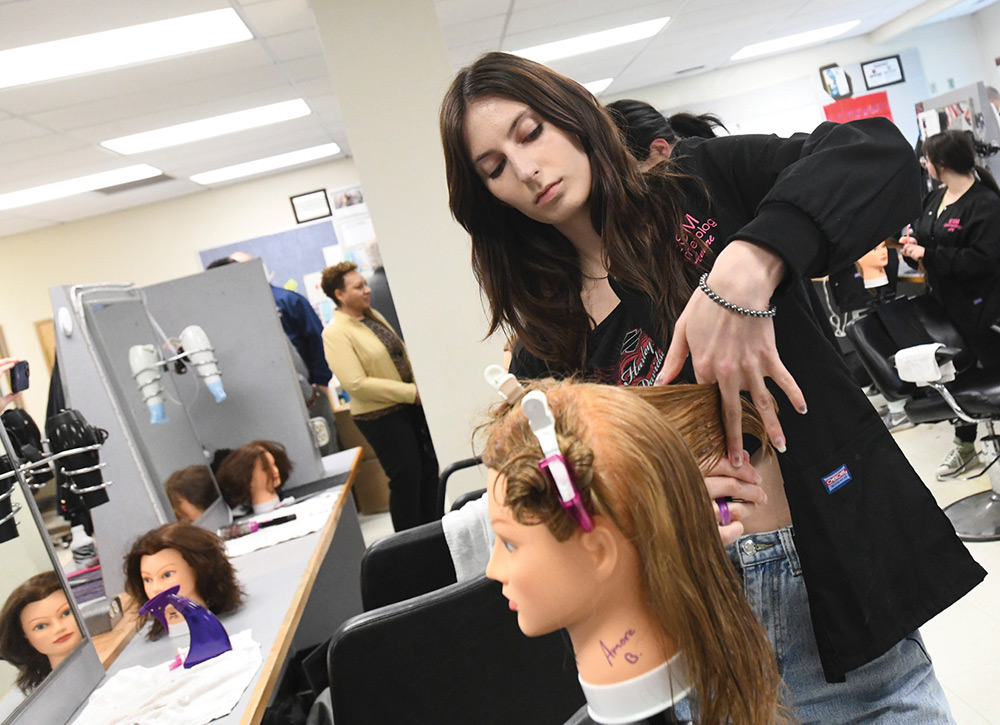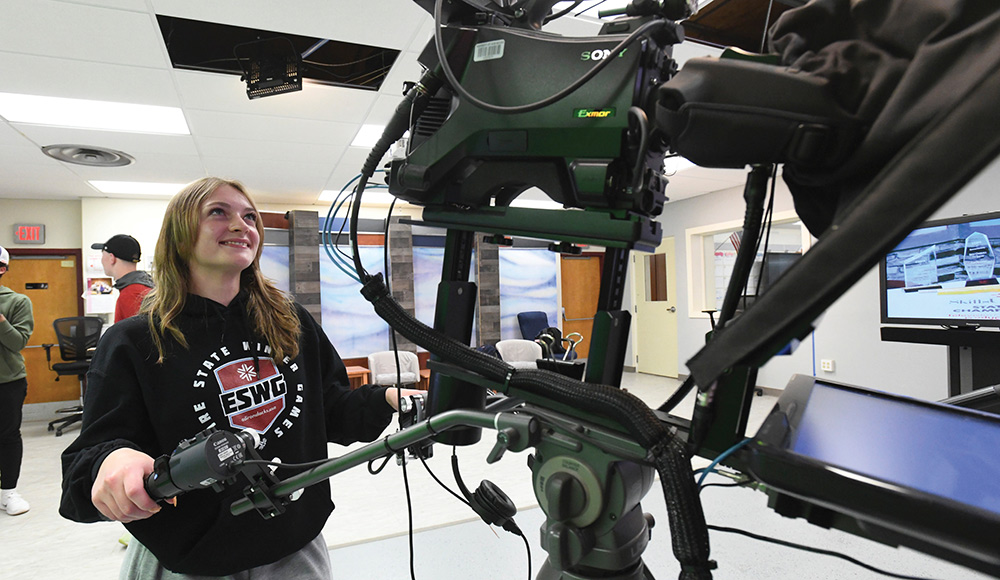CTE works: State funding needed to put students on a path to employment
hen it comes to creating a career pathway for students, Career and Technical Education works. In fact, many students graduate from high school with the credentials they need to move right into a job, usually in a high-demand field.
Along with making students career ready, CTE reinforces classroom lessons, showing students the practical applications for their academic studies.

el-wise noisette
Students who complete the cosmetology program at East Syracuse Minoa can earn state licensing. The program is affiliated with Bryant and Stratton College.
“It’s important to show students where something is going to take them,” said Newburgh Teachers Association’s Linda Romano, a health science educator at Newburgh Free Academy and president of the State Association of Career and Technical Education. “CTE connects lessons they’re learning in the classroom with the real world, using a subject they’re interested in, like nursing.”
In April, NYSUT leaders toured schools in Syracuse to learn how students are getting access to quality CTE programs that offer hands-on, experiential learning in a wide variety of fields — from car repairs to aeronautics and construction courses. NYSUT leaders also toured Tech Valley High School in Rensselaer to learn more about fascinating project-based learning opportunities for students.
Project- and skills-based learning provide opportunities for students to see school subjects like math and ELA come to life. In CTE classrooms, figures and words jump off the page and become project budgets, essential measurements like teaspoons and grams, data to chart and analyze and funding proposals.
CTE can also be a powerful tool for keeping kids in school, meeting them where their interests are and springing them forward to graduation. According to Advance CTE, New York high school students who take CTE courses boast a 92 percent graduation rate, and 98 percent of them go on to pursue post-secondary education.
Despite its proven benefits, CTE is still not available to many students across the state. In fact, demand for CTE far outstrips supply. Student enrollment in CTE programs is topping out at 270,083, but there are just 6,740 CTE instructors to meet that need.

el-wise noisette
At the Institute of Technology at Syracuse Central High School, students can learn media communications and operate the school’s news and communication network.
This past spring, BOCES faculty from across the state lobbied for more funding at the state capitol and implored lawmakers to lift a decades-old cap that limits state support for CTE instructor salaries. The current aid formula for BOCES CTE programs has not changed since 1990, and the state only provides aid for the first $30,000 of a BOCES instructor’s salary.
CTE training can take place in secondary schools or at an off-site BOCES-operated center. In both settings, instructors try to give students opportunities to explore careers by visiting worksites and shadowing employees. In some fields, like health education, clinical hours are required to achieve certification — but that can be tricky when you don’t have enough bus money.
“We don’t have enough funding to support career exploration rotations,” said Romano. “These experiences need to happen.”